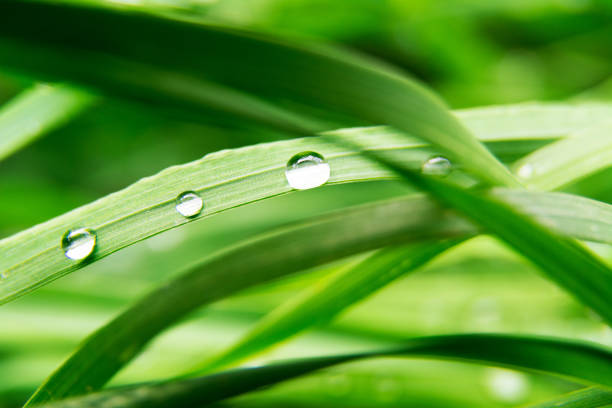Farms commonly use foliar nutrition, but how effective is it? How should its performance be assessed? What happens to the nutrients that are not absorbed?
Foliar nutrition has been studied for many years. Now, with its potential to address many 21st-century nutritional issues, the challenge for this topic is to develop good, trustworthy evidence and guidance.
Share your experiences and information here. FarmPEP can help us to collate and coordinate data and trial results, positive or negative, for all to see. Please get involved.
Foliar Nitrogen:
Farmers have used sprays of urea for many years to increase grain protein in wheat crops destined for milling and breadmaking. Urea has limited solubility in water so products contain a maximum of 20 kg N per 100 litres. These are normally applied during grain filling, with the milky ripe stage being regarded as optimal timing. Research has shown that 60 kg/ha N applied in this way increases grain protein by an average of 1% of grain DM e.g. from 12% to 13% protein in grain DM. However, sprays at this time can cause scorch of the flag and lower leaves, and may reduce grain yield a little. Practices aimed at reducing scorch are (i) product dilution (say from 20% to 10% N) and (ii) spraying at night (when transpiration is slowed).
Foliar products (of urea and/or other N compounds) currently on the market include:
- Methylated urea
- NuFol
- N-Durance
- Yaravita Safe-N 300
- Poly-N Plus - BFS
- Krypton - Agrovista
- Nutrino-Pro - Frontier
- Efficie-N-t 28® Agrovital
- Nurture N
- Folex Mu35 - Omex
What other products are you using, being offered, or are offering?
The use of foliar N to replace conventional earlier soil-applied N (to support canopy expansion of cereals, oilseeds, and many other crops, including horticultural) has been the subject of research for many years. Often its performance has proved less consistent than soil-applied N. However, some farms have recently been using foliar N sprays before grain filling and claiming that around 10 kg/ha foliar N can replace 40 kg/ha of conventional N, on the basis that they see no reduction in yield. Note that, to be convincing, such comparisons should include a treatment without either the foliar N or the extra conventional N, to show whether they were needed at all. Experiences can be shared below. The Farming Forum has an interesting discussion on this.
Foliar Phosphorus:
Soil-applied phosphorus (P) is used with poor efficiency (less than 10%). Most applied P, even if water-soluble, becomes chemically absorbed by the soil in a few weeks or months, and less available to the crop. This results in a significant amount of P accumulating in topsoils and significant pollution of water courses with P in soil sediments. Additional concerns are the limited supply and volatile prices of phosphate fertilisers. Conventionally, P applications are made to maintain an adequate level of soil P availability, as judged by soil analysis. Fertiliser P or manure P is applied either once in the rotation e.g. before responsive crops like potatoes or maize, or annually, before the establishment of each crop.
Foliar application of P may provide a more efficient and accurate method of administering this nutrient to crops. Foliar application of P comes with challenges due to limitations in the levels of P that can be applied in a single dose without scorching the leaf. Additionally, canopies are small early in crop growth when sufficient P is required to maximise a crop’s yield potential, making it difficult to apply enough fertiliser to the leaves. Also, P applied in this way enters the plant through the stomata and therefore it is important that plant water status and atmospheric conditions maintain stomatal opening after application. However, there is promising potential in foliar application of P as it by-passes soil sorption process. Some researchers have suggested that a combined approach of seed dressings followed by foliar applications (to match the plant’s increasing demand for P later in the growing season) might be more efficient than a single soil application of P in terms of uptake rate and grain yield.
Some of the foliar P fertiliser products on the market include:
- YaraVita range, liquid fertiliser products containing between 9-44% P2O5
- Fosfol, 20% P2O5 and 8% Nitrogen, suitable for potatoes
- Ilex Phosphite range, liquid fertiliser in which the P form is phosphite (PO3), containing between 2-42% P2O5 for a range of arable and vegetable crop types
- Vivagro Vitelice P, 31% P2O5 foliar fertiliser also containing potash, magnesium, zinc, manganese, and copper
- ICL Agroleaf Power range, NPK foliar fertilisers containing between 5 and 52% P2O5
- Omex Folex P, 34% P2O5 foliar fertiliser
- Omex Biostimulant range, 1-39% P2O5 and phosphite containing products
What other products are you using, being offered, or are offering?
Research is currently needed to determine the ability of foliar P products on the market to supply crops with sufficient P under different soil P indices, and to compare these to the standard approach of granular P fertiliser applied before or at sowing. What has your experience been with foliar P nutrition?
Read about Foliar Nutrition:
- A thorough review of current international knowledge of foliar nutrition (144 pages) is published by the IFA here. Whilst it describes much that is known, it lists many vital issues that still remain uncertain or inadequately understood. The authors are Victoria Fernández (Technical University of Madrid), Thomas Sotiropoulos ('Demeter’ Pomology Institute, Greece) and Patrick Brown (University of California, Davis).
- A thorough review of crop nutrition with minor and micro-nutrients, including foliar applications, is published by AHDB here
- AHDB last reviewed foliar nitrogen application for wheat in 2001 here






Discussion
I have been invited to present a paper on foliar nutrition (and grain analysis) to the IFS Agronomy Conference in December 2022, and would really like this to address everyone's current issues and recent results. Please share them here, or let me know.